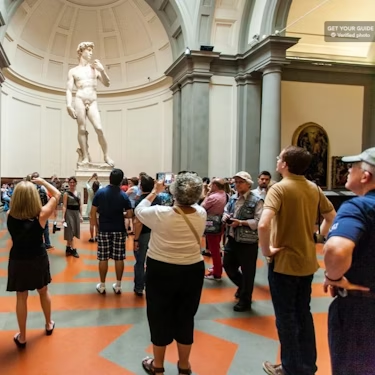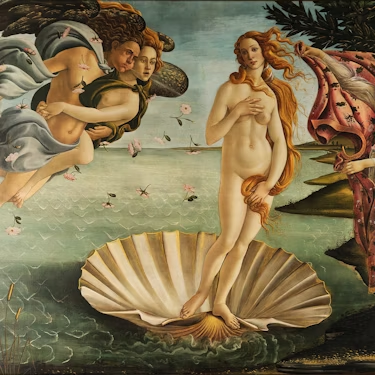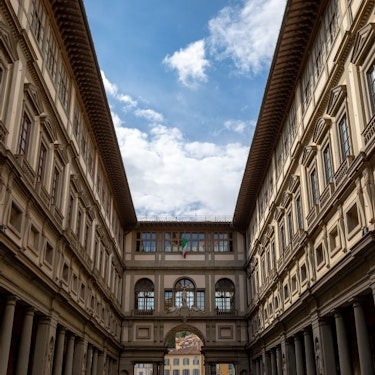More about: Florence in 7 Days: tips, what to see, and much more
In 7 days we can thoroughly explore the city with all there is to see and do in Florence, as well as having plenty of time to do some of the most interesting excursions around Florence.
In the itinerary I share with you below we dedicate the first few days to get to know the monuments, museums and historical sites of the city in depth, and we reserve a couple of days to get to know the surroundings of the capital of Tuscany with gastronomic excursions and visits to some villages of extraordinary beauty.
Day 1: We start our trip getting to know the heart of Florence
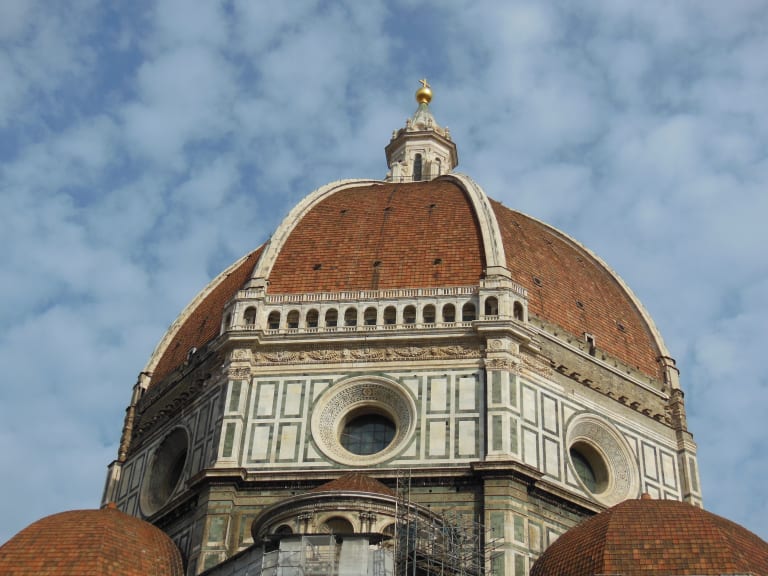
Piazza Duomo, Cathedral and Baptistery San Giovanni
Although there is much to see and do in Florence, the best place to start this trip is in the very heart of the city. This is located in Piazza Duomo where the famous cathedral with the spectacular dome by Brunelleschi, the bell tower by Giotto and the Baptistery of San Giovanni are located. This entire complex is one of the masterpieces of the Renaissance and is worth visiting in its entirety, including the climb to the dome.
We can dedicate the whole morning of the first day to tour it thoroughly and even part of the afternoon, after a stop for lunch if we see it calmly or if we have not been foresighted and we have not made us with advance tickets to the Duomo of Florence. In this case we may have to wait in line. However, the Duomo complex is a visit you will never forget and if you hire a guided tour, the experience will be even more enriching.
Via dei Neri and dell'Ariento and central market
After an impressive but exhausting visit to the Duomo complex, it is necessary to recharge your batteries and relax with a good meal and a pleasant stroll through the center of Florence. For this, the best thing to do is to visit the central market, not far from the Duomo, and enjoy the best local products in its stalls, tasting them in the restaurants in and around the market.
Afterwards, we can spend the afternoon strolling along Via dei Neri and Via dell'Ariento, two of the most frequented central streets where we can find stores, gelaterias and an endless number of places perfect for getting to know the Florentine tradition. A good end to a first day in Florence.
Day 2: Historical and artistic center of Florence.

Galleria dell'Accademia
Next to the Uffizi Gallery, the Accademia Gallery in Florence is the most visited museum in the city and also one of the most frequented in the world. The main culprit is the artist Michelangelo and his famous David, which rests in this museum. The more than 5 meters high sculpture attracts millions of visitors, although it is not the only work of art exhibited in the Galleria dell'Accademia. The Accademia Gallery has a magnificent collection of Renaissance art with paintings and sculptures by various authors in addition to Michelangelo.
Church of Santa Maria Novella and Novecento museum
After visiting the Accademia we headed to the Basilica of Santa Maria Novella just a few minutes walk from the Accademia museum. This church was declared a World Heritage Site for its architectural and artistic value. Its facade is a masterpiece of the Renaissance and inside there are several works of art by such important authors as Brunelleschi or Masaccio.
In the same square where the Basilica of Santa Maria Novella is located is the Novecento museum. It is a museum of modern and contemporary art that offers a very interesting contrast with the Renaissance art of Florence. It is always a recommended visit.
Basilica of Santa Croce and Piazza Santa Croce
To conclude the second day a very interesting option is to visit the Basilica of Santa Croce. Crossing the city center from Santa Maria Novella with a pleasant walk of about 15 minutes, we will reach Piazza Santa Croce.
In this beautiful square is the Basilica of the Holy Cross, inside which lie the remains of great figures of history such as Dante Alighieri, Machiavelli, Michelangelo and Galileo Galilei. The beauty of the place is at the height of the illustrious figures resting in this church, which is also the perfect finishing touch to crown our second day in Florence.
Day 3: A day to fully immerse ourselves in the Italian Renaissance

Porcellino Fountain
Our third day in Florence will begin by putting into practice one of the traditions favored by tourists. In the new market near the Ponte Vecchio you will find the fountain of the Porcellino or boar, as it is the copper animal that decorates the fountain. Tradition dictates that if you place a coin in the mouth of the bronze animal and it falls into the grates through which the water falls, you will be lucky and you will be able to return to Florence. Something that, no doubt, you will be looking forward to after visiting the city.
Palazzo Vecchio and Ponte Vecchio
Near the Porcellino and crossing the Arno River is one of the most famous bridges in the world and symbol of Florence: the Ponte Vecchio. This medieval bridge is one of the few remaining inhabited bridges in the world and one of the busiest places in the city.
The ponte Vecchio leads to via Santa Maria which, in turn, takes us to Piazza della Signoria where our next destination is, the Palazzo Vecchio. It is currently the seat of the Florence City Hall, but you can enter to visit its museum and the rooms of the nobles who lived there, such as the Medici.
Uffizi Gallery
You can't travel to Florence and not visit the Uffizi Gallery. This museum is a must-see, as its collection is one of the most important in the world. The Uffizi Gallery houses paintings made between the thirteenth and eighteenth centuries by such important figures as Botticelli, Leonardo da Vinci, Michelangelo, Raphael and Titian. A place of worship for every art lover. The information to get your tickets to visit the Uffizi Gallery I leave you in this link.
Day 4: Day to visit the monuments and sites south of Florence

Abbey of San Miniato and piazzale Michelangelo
On the fourth day of this Florence itinerary it is time to cross the Arno River and visit the southern part of Florence. The first stop in this area is Michelangelo square. The charm of this square lies in the spectacular panoramic views of the city. Not in vain is one of the most repeated photographs of Florence.
Crowning the same hill on which the viewpoint is located is the abbey of San Miniato. The name of this church is due to the first saint and martyr of Florence, San Miniato, who according to legend after being beheaded rose taking his head and returning to the cave where he lived as a hermit. In the same place was built this church in Romanesque style, with the hallmark and personality of Tuscany.
Palazzo Pitti and Boboli Gardens
The Pitti Palace complex can be reached by crossing the Ponte Vecchio and following the Via de Guicciardini. This palace belonged to a banker named Luca Pitti who sold the building to the Medici. Its interior serves as a museum with a large collection of art that can be enjoyed while walking through the rooms of the palace.
But the highlight of the palace are the Boboli gardens. This large green space of Renaissance style was recognized as a World Heritage Site by Unesco thanks to its spectacular fountains and its carefully tended vegetation. There are so many sculptures and fountains of great artistic value that it is difficult to list them. As a bonus, from the gardens there is also a good panoramic view of the city.
Day 5: Excursion to Tuscany and wine tasting

As I already told you, in 7 days in Florence we will have time for very interesting excursions in the surroundings of Florence and on the fifth day of our trip we can treat ourselves to a gastronomic tribute in the Italian Tuscany.
Excursion to Chianti with wine tasting and typical Tuscan products
Florence is the capital of Tuscany and as such in its vicinity are some of the most important regions in terms of gastronomic culture. Therefore, on the fifth day of this itinerary I suggest you to leave the city in search of a good winery where you can taste the best wines and products of Italian Tuscany.
The options are varied but, to be on the safe side, the best thing to do is to visit Chianti. Very close to the city, this region is known worldwide for its wines and wineries. With an organized excursion we can visit some of its vineyards where we will be offered wines and typical products to live an experience that your palate will hardly forget.
Day 6: Tuscan villages and landmarks
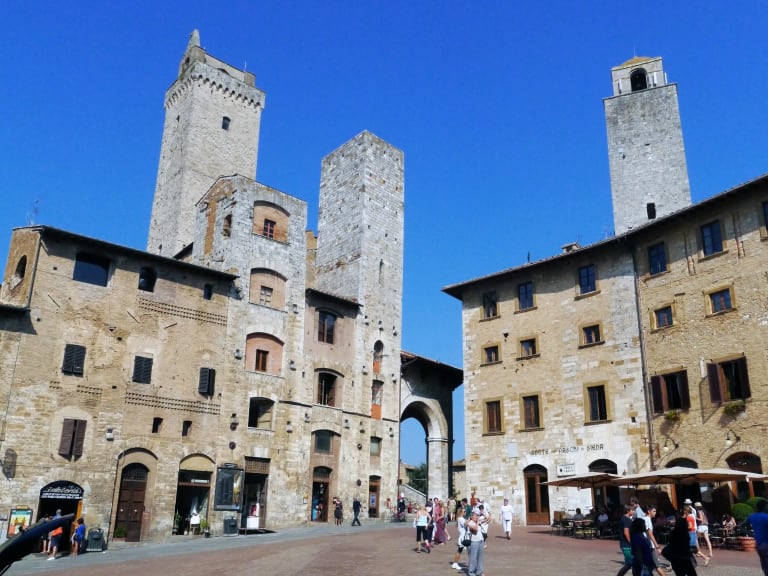
Tuscany is much more than wineries and wines. They are also dreamy villages steeped in history and make a perfect destination for our sixth day of our trip through Florence.
Starting with San Gimignano, perhaps the most beautiful village of all. Located less than 60 kilometers from Florence, this town is known as the city of a thousand towers for its numerous bell towers and spires concentrated in a small town. It was declared a World Heritage Site by Unesco thanks to its charm and architecture, which makes it one of the most recommended excursions from Florence.
The town is very nice to see and can be comfortably toured in a couple of hours, which leaves more time in the same day to visit other places such as Pisa or Siena.
San Gimignano and Monteriggioni Castle
Less than half an hour's drive from San Gimignano is another village with the unique charm of Tuscany. The small town of Monteriggioni, famous for its peculiar castle.
On top of a hill surrounded on all four sides by vineyards and behind its walls, the small village of Monteriggioni is made up of a few medieval houses with lots of charm and personality. It is a perfect destination to combine history and gastronomy and therefore one of the best places to visit in Tuscany.
Day 7: A last day to say goodbye to Florence

After 6 days in which we have already known all the most important things to see in Florence and its surroundings, it's time to enjoy a more relaxed last day. We can not say goodbye to Florence without visiting the neighborhood of San Lorenzo.
In this neighborhood, one of the favorites of Florentines, coexist the art and history characteristic of Florence with a modern atmosphere and streets full of stores, markets and typical Italian trattorias.
While walking through the neighborhood at leisure, we can make stops to visit the Basilica of San Lorenzo which houses the Medici Chapel where several members of this historic family rest. Artists such as Michelangelo and Brunelleschi himself intervened in the church.
Bargello Museum and Buonarroti House
In the same neighborhood of San Lorenzo are two important museums of the city and are a good place to say goodbye to the city of art. The first one is the Bargello Museum. Located in a medieval building, its exhibition mixes works from medieval Florence with others from its golden age, the Renaissance. Donatello's David or Michelangelo's Bacchus are its two most important works of art.
The Buonarrotti house is the last point to visit in our 7-day itinerary in Florence. Although Michelangelo was not born in Florence, the artist spent much of his life in this city and therefore shares the title of favorite artist of Florence with Brunelleschi. The Casa Buonarrotti was the home of Michelangelo himself and displays numerous works from the artist's youth and some of his incomplete works.
Since Florence is a city dominated by art, what better than to say goodbye to it surrounded by art, and nothing better than doing so by taking a private tour in which we can walk, hand in hand with an expert guide, the works of Michelangelo and the places where he developed his career.


